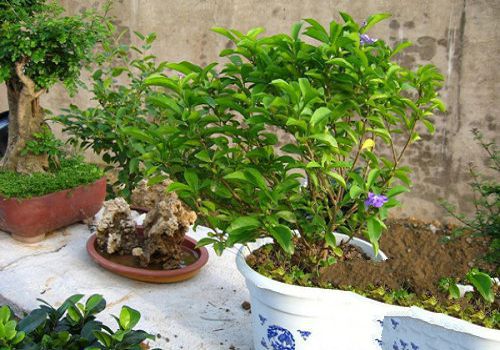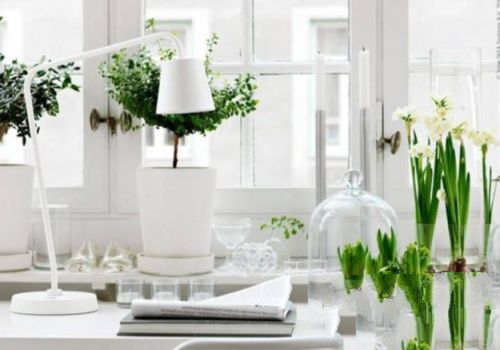Types and allocation methods of potted soil for potted flowers

Potted flowers only rely on the limited soil in the pot for their growth, so they are different from being cultivated in courtyards and open fields. The soil in the basin must contain a variety of fertilizers, which not only requires good drainage and air permeability, but also must have the ability to maintain water and fertilizer. It is the basis of raising potted flowers.
There are many kinds of basin soil, which can be properly mixed with the following kinds of soil, and then added fertilizer can be used.
(1) Paddy soil: Paddy soil containing clay and heavy clay is suitable to be used as pot soil. Heavy clay is the clayey soil deposited at the bottom of the paddy field. Paddy soil refers to the soil in the paddy field after drying, sifting and separating the small-grained soil, mixed with appropriate amount of rotten leaf soil and rice chaff ash as basin soil. These small-grained soils are easy to absorb water, and there are gaps between soil particles, which is conducive to the circulation of water and air, is conducive to the development of root groups, and the roots are easy to grow.
(2) Dryland soil: it means that the mace of xerophyte such as vegetable garden, orchard and dry grain cultivation land can be divided into sandy loam, loam, clay and heavy clay. The soil with good soil quality, such as sandy loam, loam and clay loam, which contains more fertilizer, can be used as pot soil.
(3) saprophytic soil: also called humus soil. It is made artificially by piling up fallen leaves and soil layer by layer, injecting manure, pouring enough water, and retting. Because of its loose and fertile soil, it is suitable for chrysanthemum cultivation and pot cultivation. When in use, it is often mixed with river sand and field mud, mixed and planted.
(4) Mountain soil: there are usually red and black. Red clay, reddish soil color, stickiness and non-stickiness can be used. When in use, it is often mixed with rotten leaf soil, river mud and so on. Black soil, a natural rotten leaf soil, is often found in deep mountain forests, especially under bamboo forests. It is rich in fertilizer and can be used as rotten leaf soil.
(5) Sand: there is a difference among sea sand, river sand and mountain sand. The sea sand contains salt, and the sand is too fine for planting. River sand, produced on both sides of the upper reaches of the river, the sand grain is thicker; there are red and black colors, red sand is not as good as black sand; black sand is not only convenient for drainage, but also contains fertilizer. Mountain sand can be used as a decorative potted plant to promote beauty.
Before planting or changing pots, there should be three kinds of coarse, medium and fine sand. When planting, the bottom of the basin is first covered with coarse sand, then with medium sand on the top, and then fine sand on the top, so that drainage can be more convenient. This step should not be limited to sand, but also to the use of other soil grains. The amount of sand used in potted plants is very small, flowers and fruits use more soil in Gaza, and sand grains that are too thick and too fine are not applicable.
The above soil, used alone, has its shortcomings, so it is not an ideal soil for potted plants. When in use, several kinds of soil must be combined, commonly known as matching soil. To meet the requirements of the soil is loose and fertile, good water permeability and air permeability. For example, 2 parts of paddy soil, 1 part of black soil or rotten leaf soil, fully mixed, sifted, mixed with a certain amount of human feces and urine, mixed evenly, and then piled in a place free from rain; after about 1 or 2 months, add rice chaff ash or plant ash, and after 2 weeks, it can be used. The proportion of the compounding weight of the soil can be referred to according to the different varieties of flowers and fruits.
Related
- What if the leaves of potted flowers turn yellow?
- Florescence Control of several Flowers
- Anti-freezing technology and post-freezing nursing technology of flowers
- What is the classification of flowers? What are the common methods of flower classification?
- Prevention and control of alkali and acid damage of flowers in courtyard
- Technology of Anti-freezing and restoring growth of Flower seedlings in greenhouse and greenhouse
- How does flower fertilization not hurt the root? Fertilization technology of flowers
- Key points of disinfection in flower greenhouse
- Several pesticides that are banned or used cautiously in flowers
- How to fertilize the flowers that watch the leaves?



